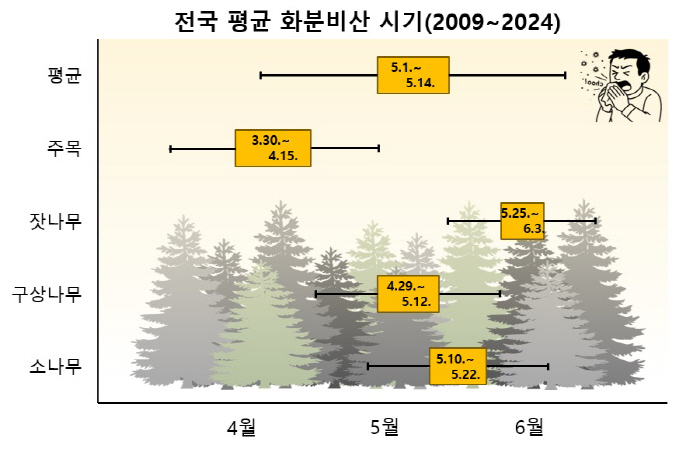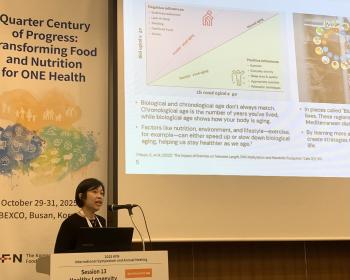Early next month, Songhwa powder will start flying...National Arboretum Calls for Allergies to Uninvited Visitors in the Early Spring
Apr 30, 2025
|
On the 30th, the National Arboretum announced the results of a monitoring analysis on the period of potted rain (flowers) of four coniferous species, including pine, bulbous tree, pine tree, pine tree, and yew.
According to this analysis based on data accumulated over the past 15 years, the average start of pot scattering for four conifers is accelerating every year.
The start of potted rain, which was in the early May of the 2010s, was April 26 in 2024, which was more than 15 days earlier. In fact, in 2024, pine trees began to be scattered on May 2, fir trees on April 23, pine trees on May 22, and yew on March 27. On average, pine trees are accelerating by 0.3 days, fir trees by 1.0 days, pine trees by 0.8 days, and attention by 0.9 days.
According to the 2025 forecast, pollen scattering is expected to begin in early May for pine trees with the largest number of observation points nationwide, and in mid-May for pine trees, special attention is required from the people who are sensitive to allergic reactions.
Conifer pollen such as pine powder does not directly harm the human body, but it can cause various symptoms such as sneezing, runny nose, and itching in people with allergic constitution, so care should be taken when going out.
Lim Young-seok, director of the National Arboretum, said, "The phenomenon of accelerating the scattering period of coniferous plants due to climate change is a clear indicator of climate change. In the future, we need to actively respond to the impact of ecosystems caused by climate change by developing precise predictive models along with long-term observation of plant season phenomena." he said.
This article was translated by Naver AI translator.














